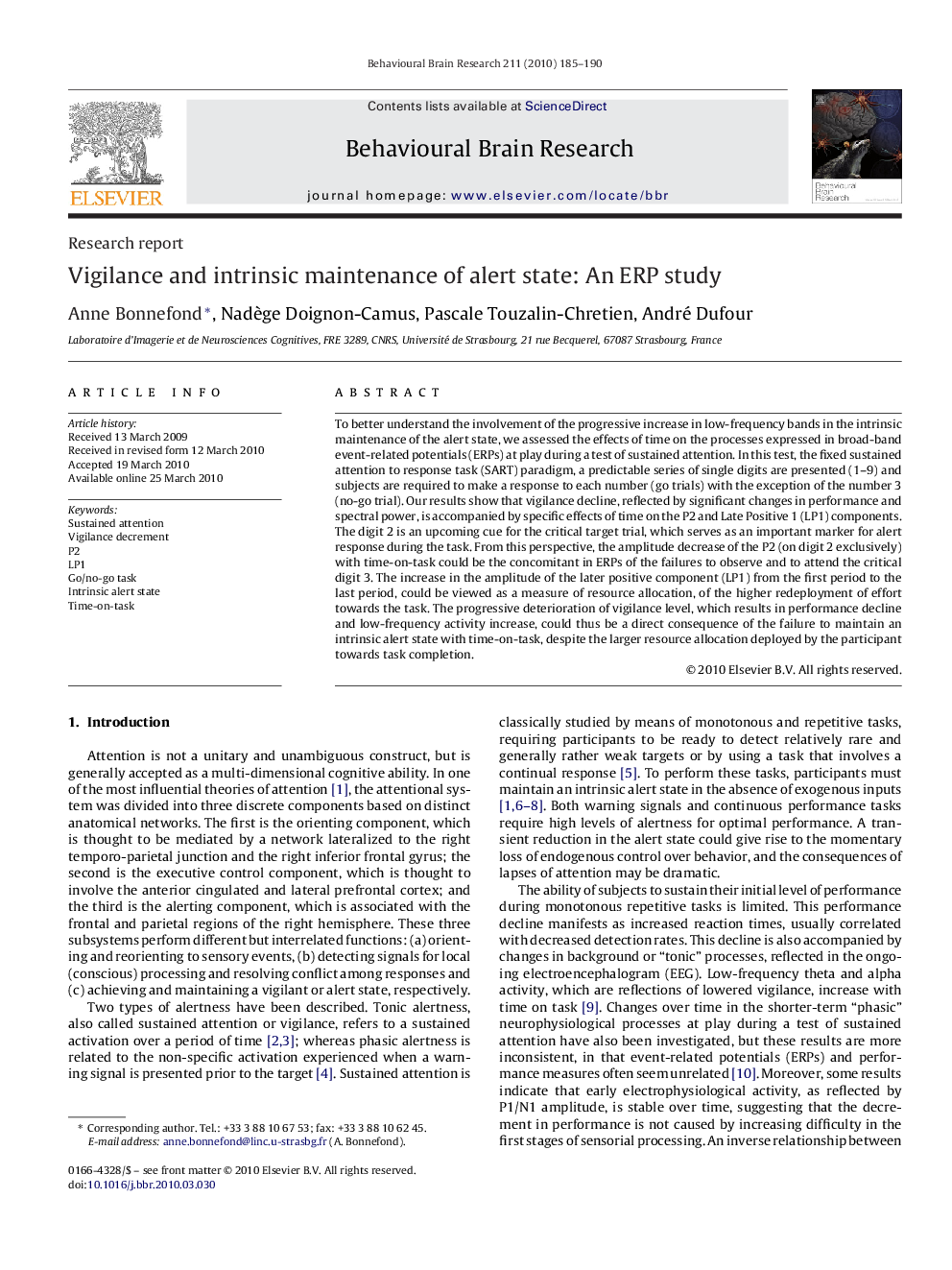| کد مقاله | کد نشریه | سال انتشار | مقاله انگلیسی | نسخه تمام متن |
|---|---|---|---|---|
| 4313960 | 1290019 | 2010 | 6 صفحه PDF | دانلود رایگان |

To better understand the involvement of the progressive increase in low-frequency bands in the intrinsic maintenance of the alert state, we assessed the effects of time on the processes expressed in broad-band event-related potentials (ERPs) at play during a test of sustained attention. In this test, the fixed sustained attention to response task (SART) paradigm, a predictable series of single digits are presented (1–9) and subjects are required to make a response to each number (go trials) with the exception of the number 3 (no-go trial). Our results show that vigilance decline, reflected by significant changes in performance and spectral power, is accompanied by specific effects of time on the P2 and Late Positive 1 (LP1) components. The digit 2 is an upcoming cue for the critical target trial, which serves as an important marker for alert response during the task. From this perspective, the amplitude decrease of the P2 (on digit 2 exclusively) with time-on-task could be the concomitant in ERPs of the failures to observe and to attend the critical digit 3. The increase in the amplitude of the later positive component (LP1) from the first period to the last period, could be viewed as a measure of resource allocation, of the higher redeployment of effort towards the task. The progressive deterioration of vigilance level, which results in performance decline and low-frequency activity increase, could thus be a direct consequence of the failure to maintain an intrinsic alert state with time-on-task, despite the larger resource allocation deployed by the participant towards task completion.
Journal: Behavioural Brain Research - Volume 211, Issue 2, 25 August 2010, Pages 185–190